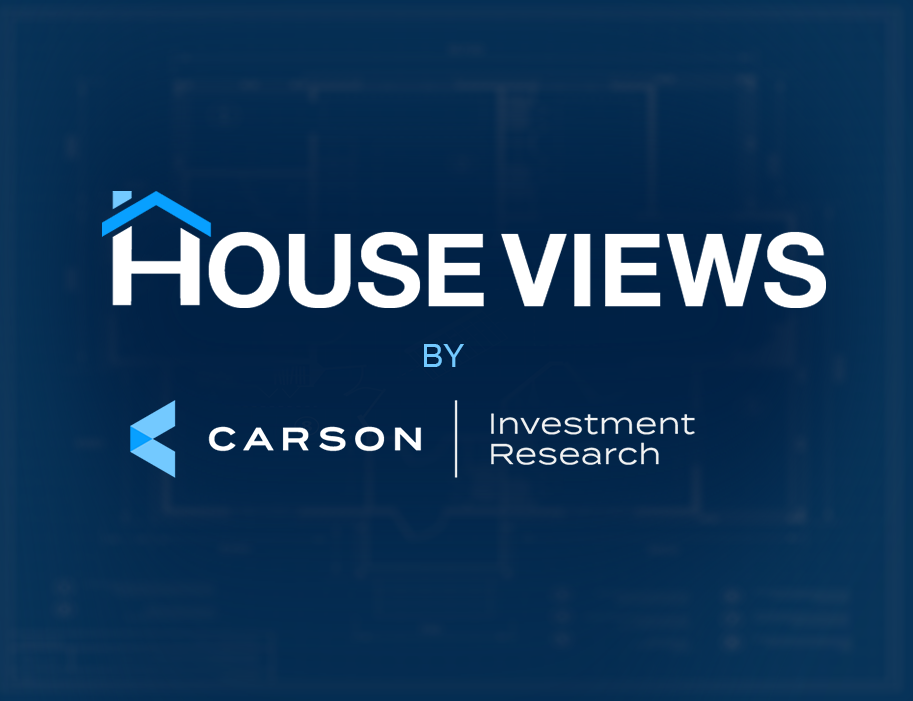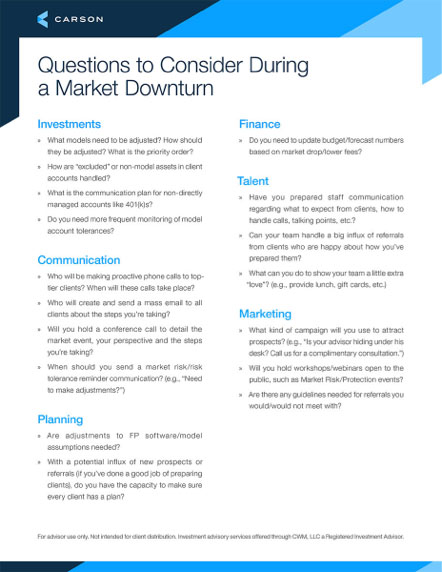We here at the Carson Investment Research Team regularly update our “House Views” on the markets, and specifically various asset classes that make up the core of our portfolios. These views are the foundation of our active asset allocation recommendations and form the basis of decisions we make while managing various portfolios on the Carson Investment Platform. You can find the latest views in our 2023 outlook.
Our core strength is the diversity of viewpoints and experience within the team. We’ve developed a framework that integrates these varying perspectives to generate asset allocation recommendations that can be used to build durable investment portfolios.
A key feature of our process is that our views are not the result of a data-driven exercise. Instead, we combine empirical data with individual perspectives borne out of decades of experience to create narratives. These are often expressed in our blogs, podcasts and other thought leadership. This is a recognition that facts are not as cut and dry when it comes to markets and investing. You need a story to understand what the totality of data is telling you.
Markets continuously evolve over time—we believe it is important to recognize this and dynamically adapt, instead of hanging our hat on any one model. This is where the strength of the team bears fruit. Various perspectives that have emerged from a wealth of experience are shared and discussed as we contextualize the current moment in time, eventually building consensus and creating a narrative for what we believe is happening in markets and the economy.
Our process consists of five pillars, the first of which is a long-term view.
Strategic views
This is our starting point and forms the basis of our strategic allocation recommendations. These are long-term, a combination of backward-looking historical evidence and forward-looking perspective.
The historical evidence leverages decades of empirical research and provides information that tell us what factors have been rewarded over the long run.
For example: the global equity premium, which is perhaps the most important driver of return, and risk, within portfolios. Going even further, you also have the low volatility anomaly, referring to the phenomena of low-volatility stocks having higher risk-adjusted returns than high-volatility stocks – which runs contrary to the notion that higher risk equals higher reward.
The forward-looking view considers the institutions, policies and market forces that will shape the global economy and markets over the next 7-10 years. We begin by identifying current conditions and trends and subsequently differentiating between cyclical versus secular forces that may result in structural changes.
For example: we believe decarbonization will lead to higher investment over the next several years (including incentives pushed by the U.S. government). But the process will be uneven, and traditional fossil fuels and industrial metals will remain a key part of the transition mix. So, we’re likely to see higher inflation volatility.
After we develop our strategic views, we overlay elements of the current business cycle to generate our short-term tactical views. Note that these may even run contrary to our longer-term views.
Economic conditions
Our team runs proprietary models that seek to “nowcast” the economies of 30 countries worldwide using more than 600 economic indicators. The process gives us a real-time picture of the global economy and evaluates recession risk in different countries. This is far from a “one size fits all” approach, and the analysis is tailored to each country and its economic drivers, whether it’s consumption, industry, exports, and/or investment.
Policy
Monetary and fiscal policy dynamics are key drivers of financial conditions and aggregate profits, with enormous implications for all asset classes. Accordingly, our team continuously seeks to understand the interplay between the economy and policy, and the work we do to understand the economy informs our view of where policy may (or may not) be headed.
Technicals
We recognize that markets typically run ahead of the economy and policy-makers. This is why our framework’s key pillar involves studying market conditions and what investors are doing. It includes statistical analysis of historical data for seasonality effects and other patterns which result from actual portfolio allocation decisions, as well as price trends and trading activity. This makes our asset allocation dynamic – helping to manage risk and identify short-term opportunities that may be run counter to our long-term views.
Valuations
We use valuations to ground our asset allocation decisions. It is particularly helpful for both identifying risks and opportunities when valuations hit extreme levels. We consider various valuation indicators and do not rely on any single definition of value.
Pulling it All Together
Asset allocation is largely responsible for the variation in portfolio returns, but it isn’t easy, especially as macroeconomic regimes shift. This is why we want to be a trusted partner as you figure this out. We have a living and breathing process that blends data, perspective, and narratives to develop asset allocation views that adapt to a dynamic environment. Views you can then use across all layers of the investment management stack – insights, advice, asset allocation, and model/portfolio management.
To stay connected to the Carson Investment Research team’s latest market insights, be sure to check out our weekly Facts vs. Feelings podcast:



